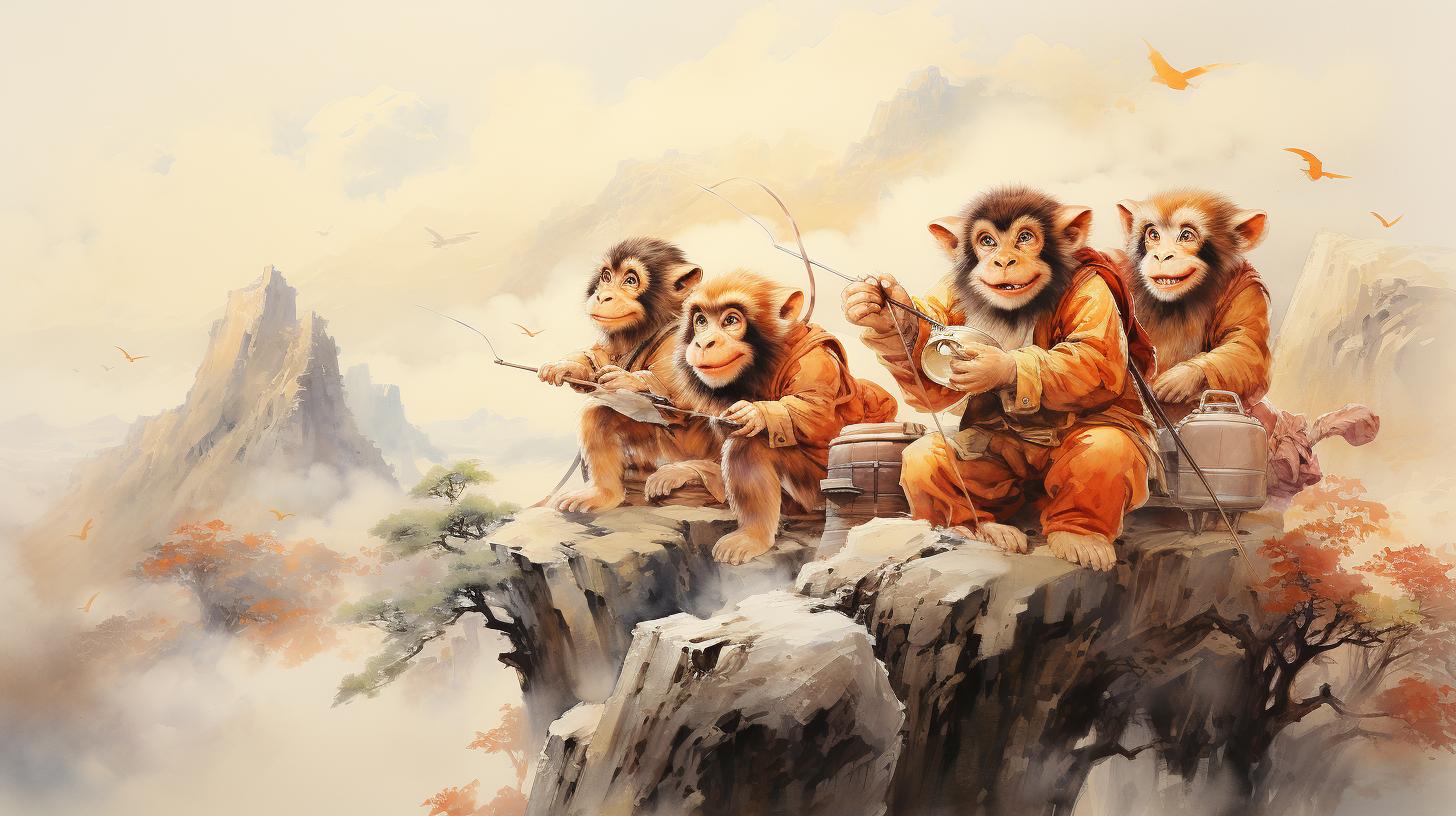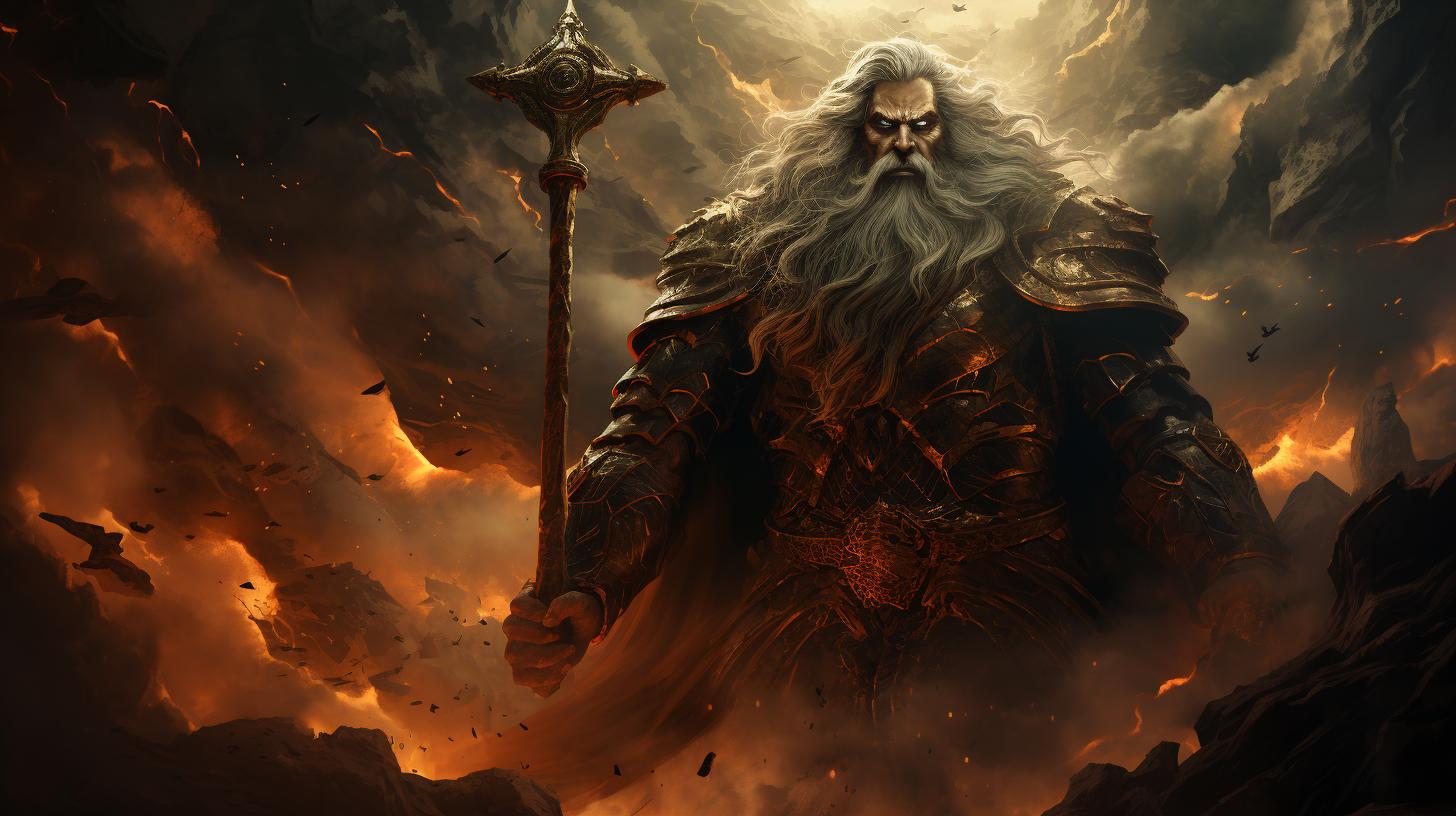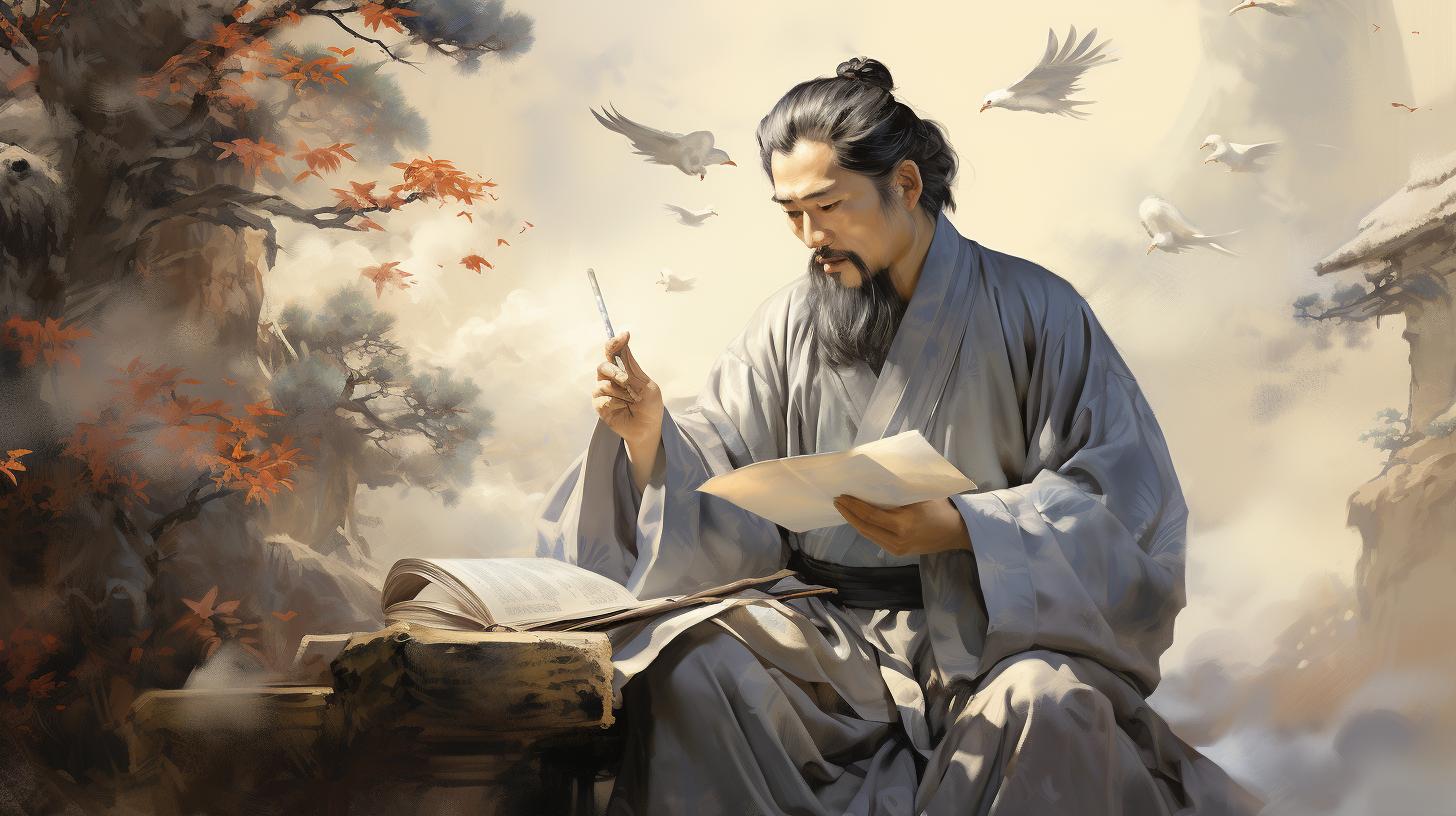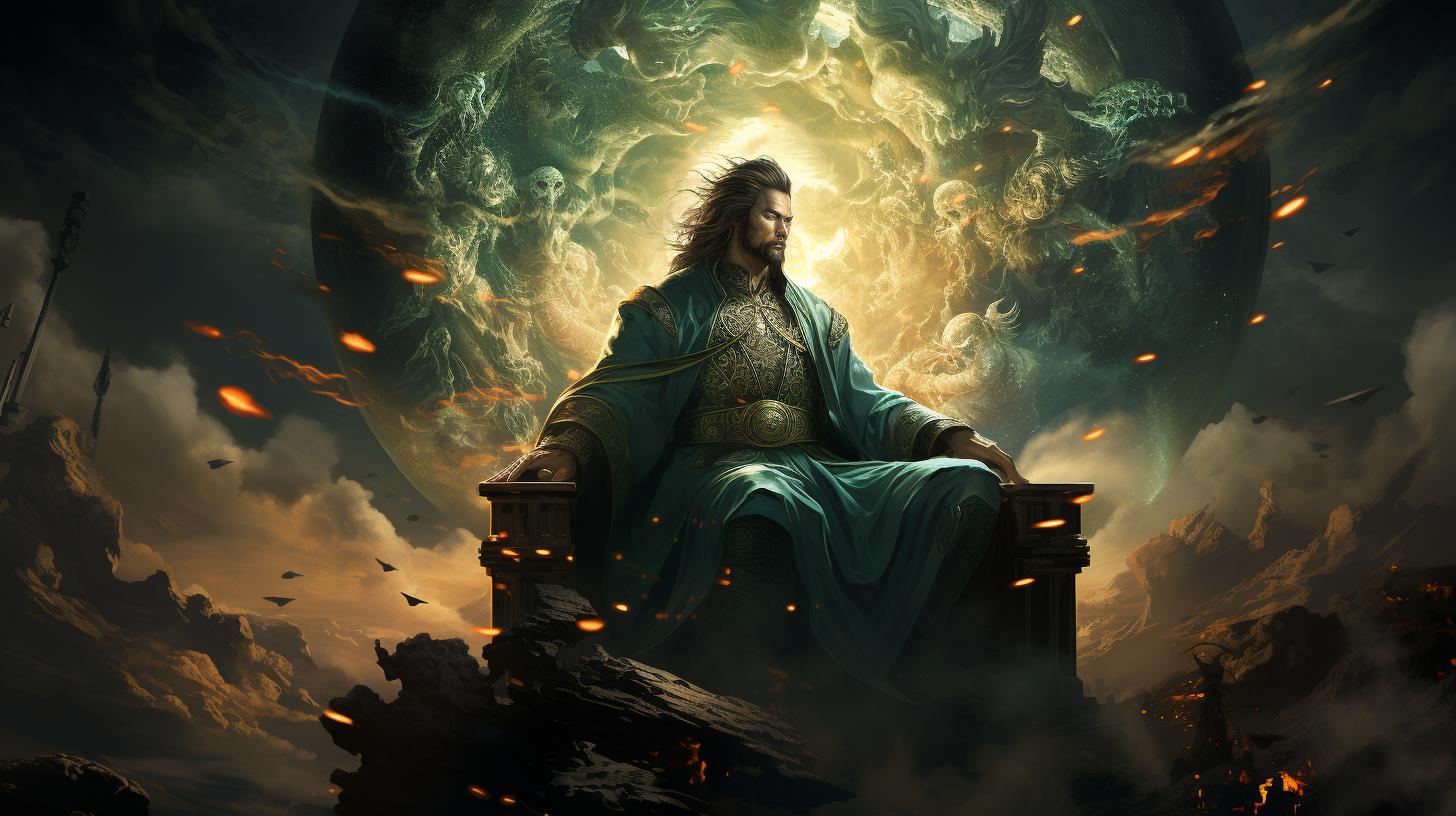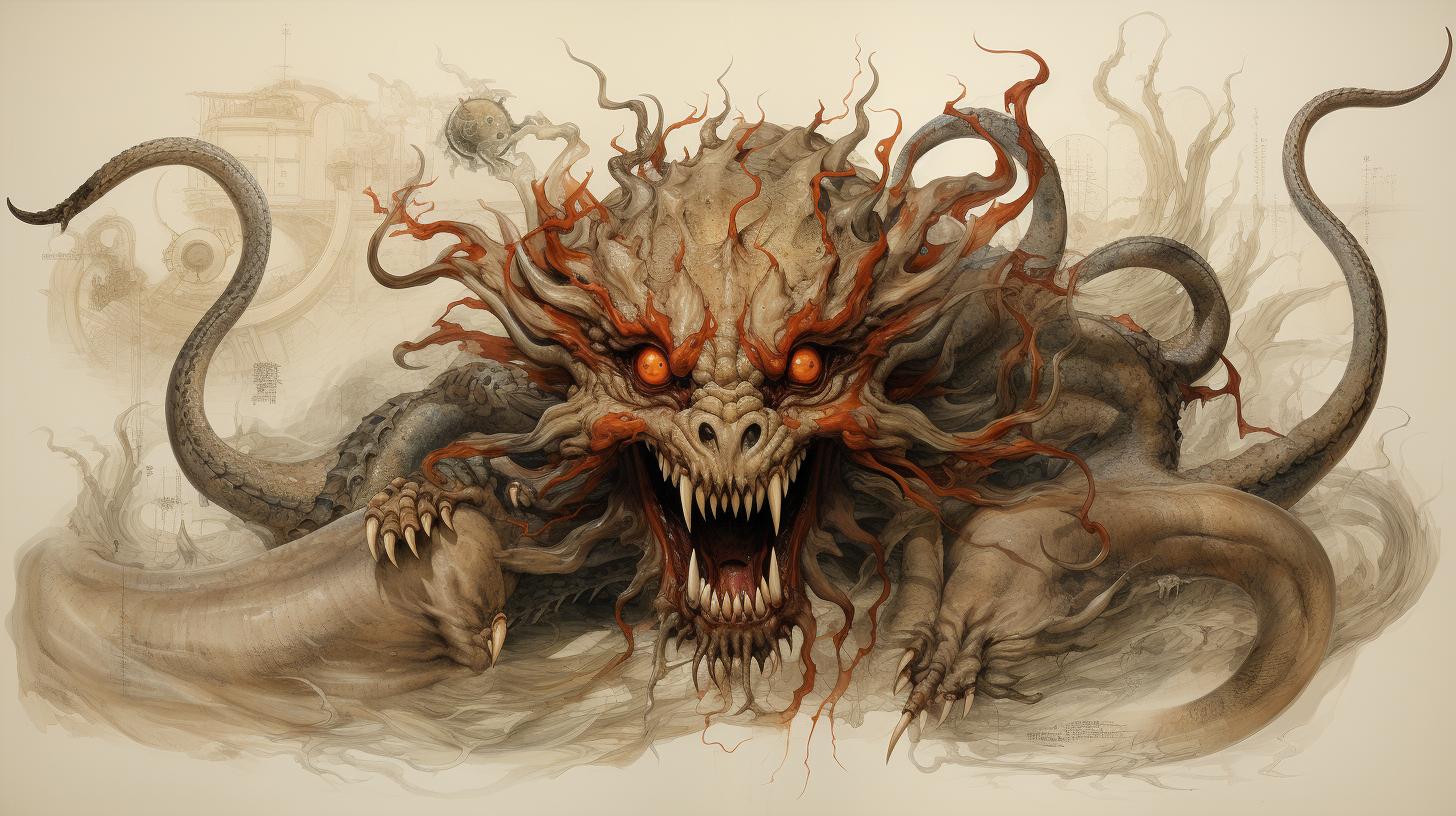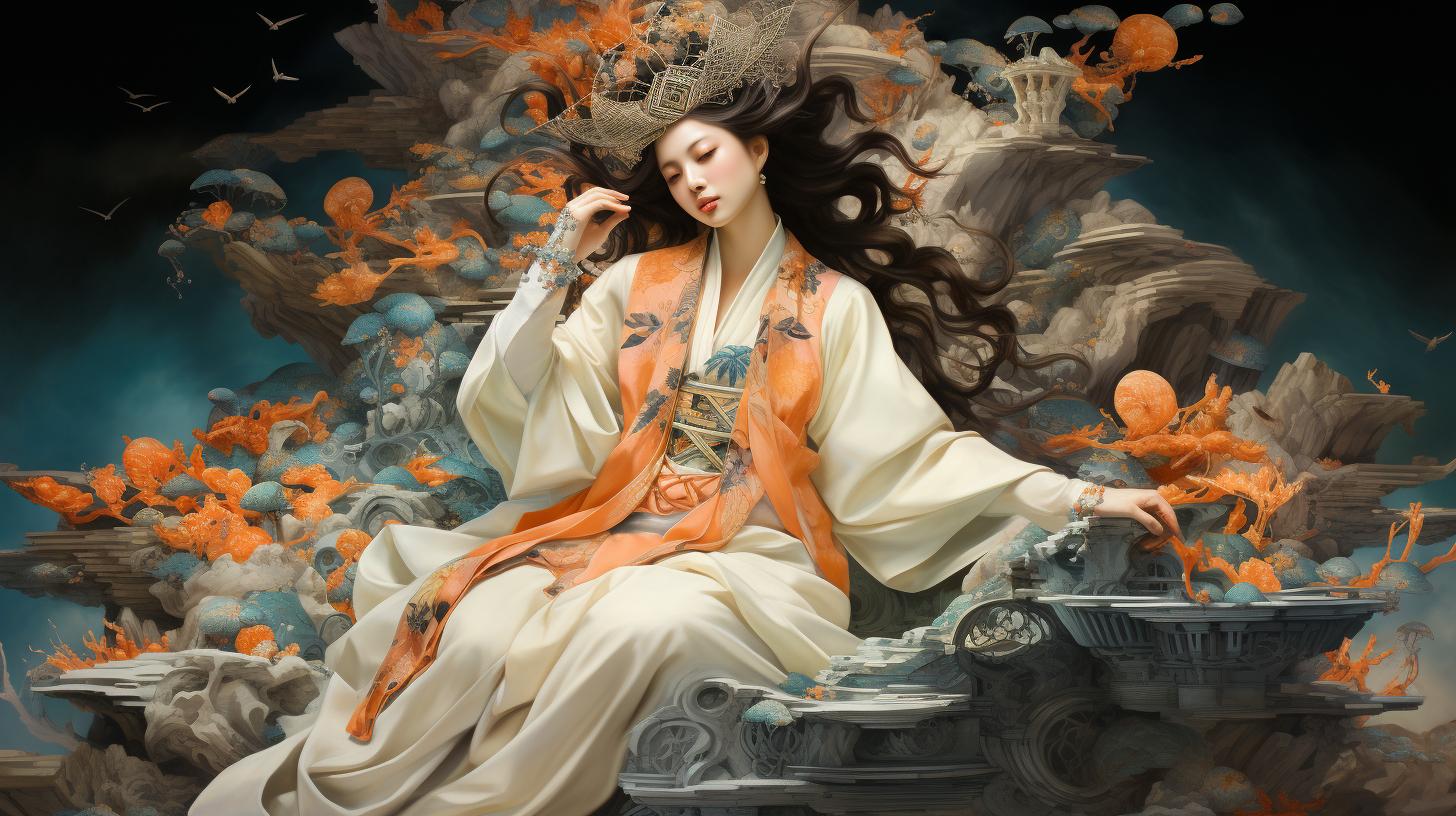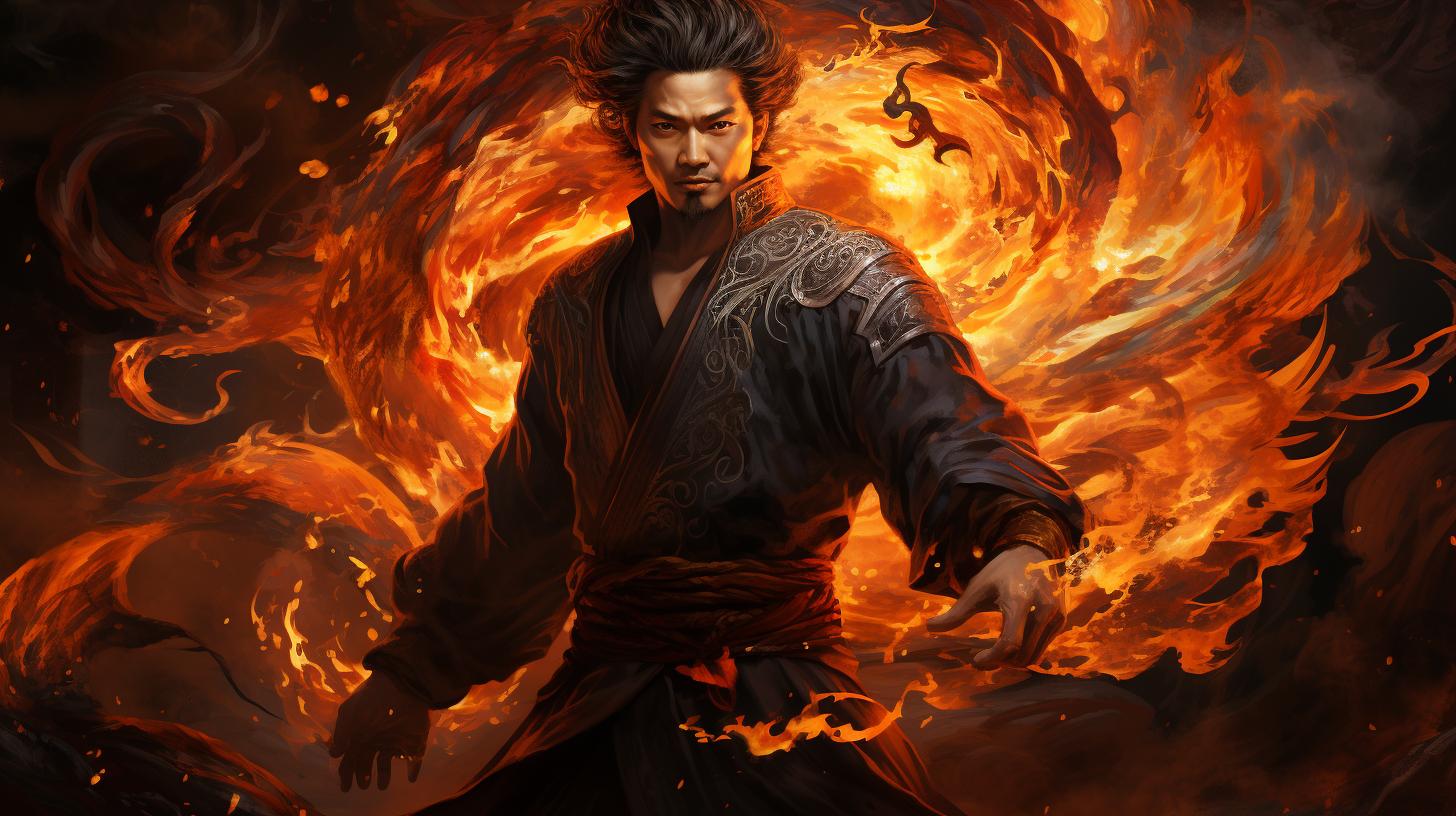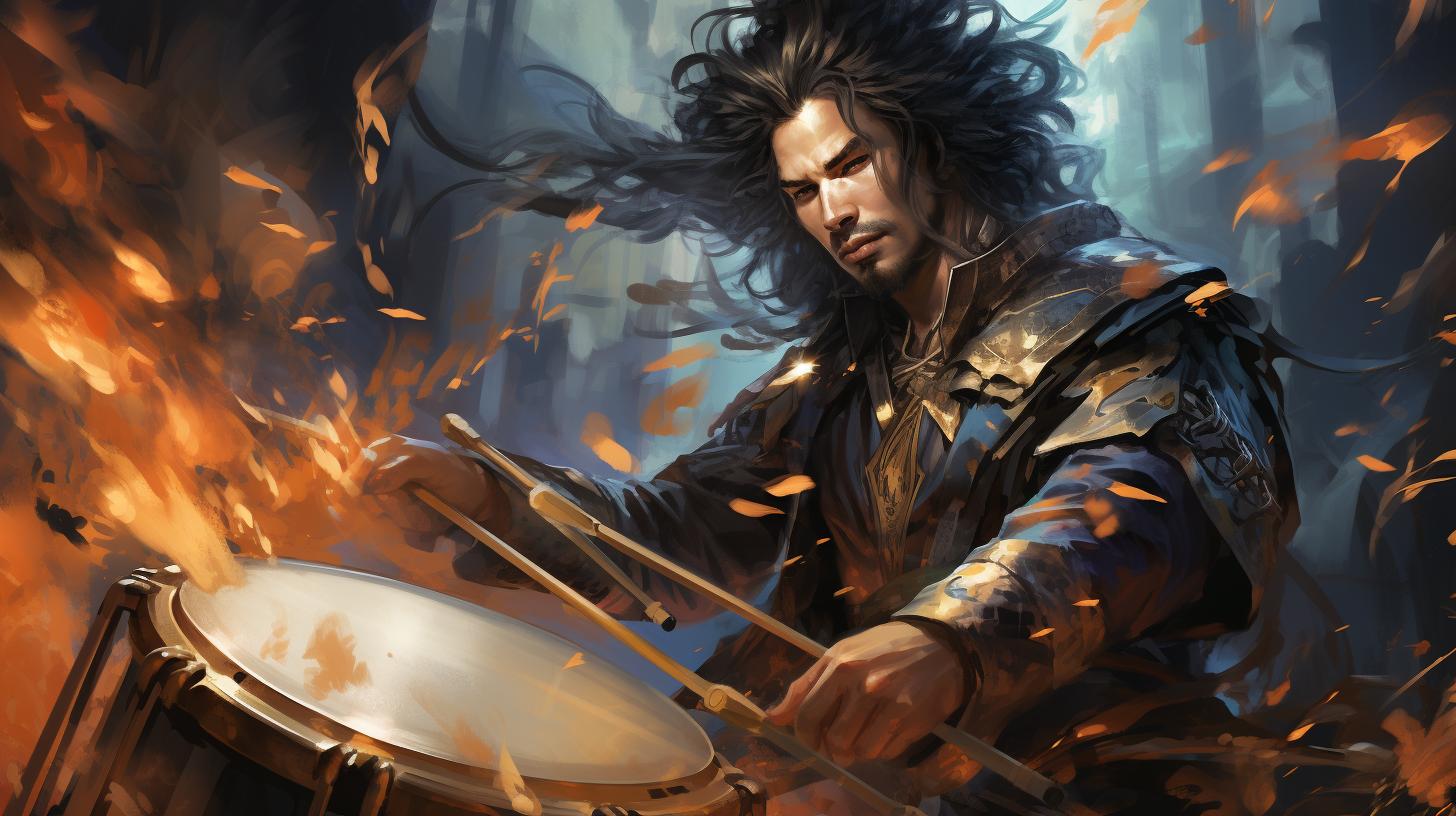‘Chinese Mythology Journey to the West: Exploring the Epic Tale of Xuanzang’s Journey’
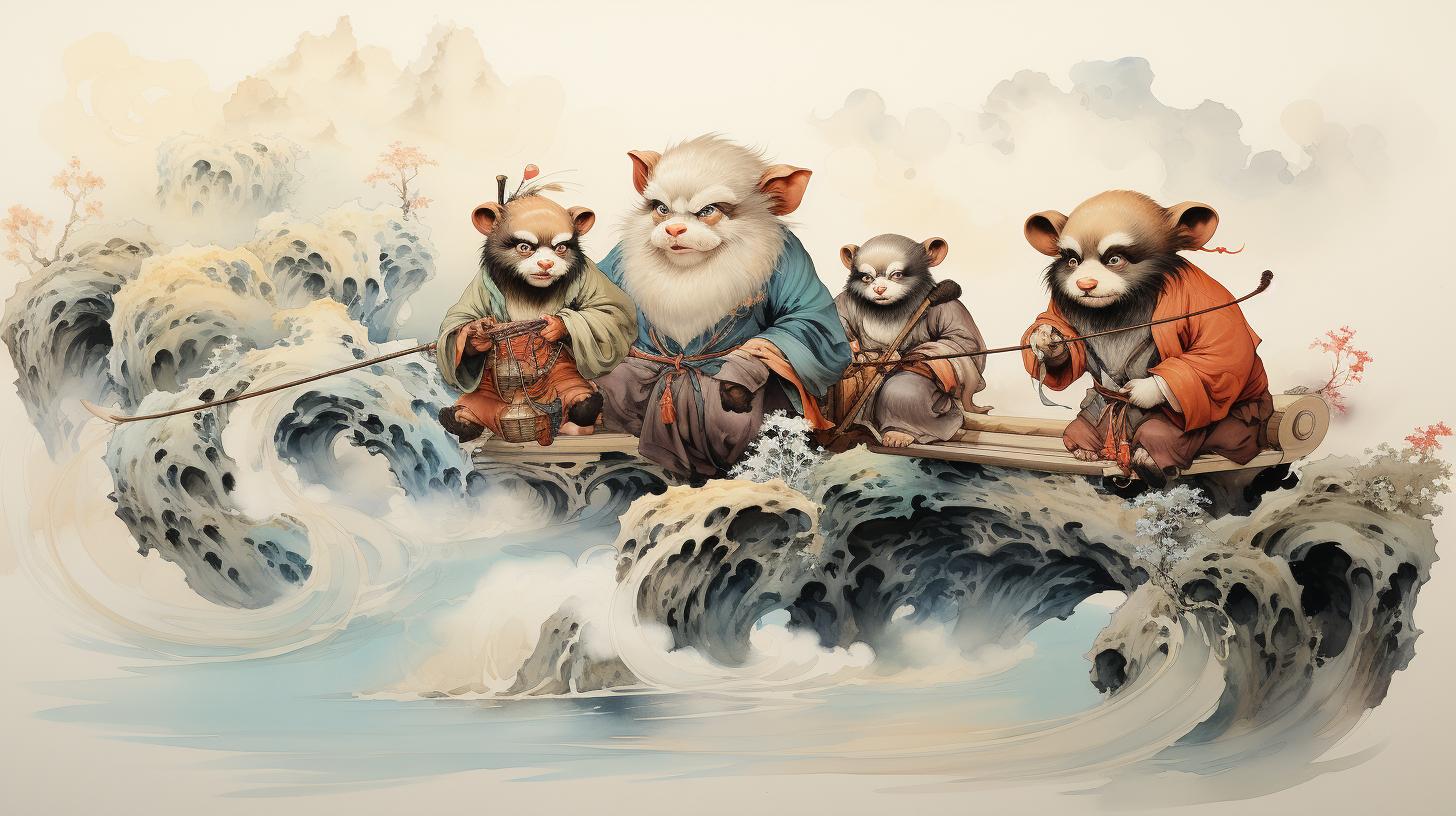
‘Chinese mythology Journey to the West’ is a famous Chinese novel written during the Ming Dynasty in the 16th century. It tells the legendary journey of Buddhist monk Xuanzang from the Tang Dynasty to the ‘Western Regions’ in search of Buddhist scriptures.
The novel, consisting of 100 chapters, combines comedy, adventure, satire, and spiritual allegory. It explores themes rooted in Chinese mythology, Confucianism, Taoism, and Buddhism. The novel has been widely translated and gained global fame.
It remains a significant influence in Chinese culture and continues to inspire adaptations in various media formats.
Historical Context
The historical context of ‘Journey to the West’ provides important insights into the influences and motivations behind the novel. It was written by Wu Cheng’en during the Ming Dynasty in the 16th century.
This was a period of rich cultural and intellectual developments in China, characterized by the exploration and blending of various religious and philosophical traditions.
During the Ming Dynasty, China experienced a renewed interest in Buddhism, which had a significant impact on the literary world.
Buddhist teachings and stories were widely disseminated and collected, leading to the popularity of religious novels like ‘Journey to the West’.
At the same time, the Ming Dynasty was marked by social and political challenges.
The empire faced external threats from Mongol and Japanese invasions, as well as internal conflicts. Against this backdrop, ‘Journey to the West’ reflects the tensions and aspirations of its time, offering an imaginative escape through its fantastical storytelling.
The novel also draws inspiration from earlier Chinese literary and mythological traditions. It incorporates elements from ancient folktales, legends, and religious texts, blending them into a cohesive narrative. This fusion of cultural influences showcases the profound interconnectedness of Chinese culture, mythology, and religious beliefs.
Furthermore, ‘Journey to the West’ reflects the broader historical context of the Silk Road, which connected China with Central Asia and the Indian subcontinent. It was a period of active cultural exchange, trade, and the spread of ideas.
Xuanzang’s journey to retrieve Buddhist scriptures mirrors the real-life travels of Chinese monks who ventured westward in search of knowledge and spiritual enlightenment.
Synopsis
The synopsis of ‘Journey to the West’ provides an overview of the epic tale, detailing the main storyline and its characters. It follows the legendary journey of a Buddhist monk named Xuanzang from the Tang Dynasty, who embarks on a quest to obtain sacred Buddhist scriptures.
Accompanied by three spirits—Sun Wukong, Pigsy, and Sandy—Xuanzang faces numerous challenges and adventures.
The story begins with an exploration of Sun Wukong, also known as the Monkey King, and his mischievous exploits.
The narrative then shifts to Xuanzang, his origins, and his divine calling to bring back the scriptures from the Western Paradise.
As Xuanzang sets out on his pilgrimage, he encounters a wide range of obstacles and adversaries, both human and supernatural.
Along the way, he relies on the remarkable abilities and loyalty of his three animal companions to overcome these trials. Sun Wukong, with his incredible strength and shape-shifting powers, proves to be an invaluable ally.
Pigsy, a gluttonous creature with a knack for mischief, provides comic relief. Sandy, a spirit transformed into the form of a fish, brings wisdom and agility to the group.
The journey encompasses 81 adventures, each presenting its own unique challenges and lessons for the characters.
They encounter dangerous demons, formidable gods, and treacherous landscapes, testing their resolve and devotion to their quest. Throughout the narrative, themes of friendship, loyalty, and self-discovery are interwoven.
‘Journey to the West’ incorporates elements of comedy, adventure, and spiritual allegory, captivating readers with its fantastical world and mythical creatures.
The novel draws inspiration from Chinese mythology, Confucianism, Taoism, and Buddhism, reflecting the cultural and religious influences prevalent during the Ming Dynasty.
Due to its enduring popularity, ‘Journey to the West’ has been the subject of various media adaptations, further solidifying its status as a cherished work of literature.
Today, this epic tale continues to inspire and enchant readers worldwide, showcasing the rich cultural heritage of Chinese mythology and storytelling.
Main Characters
The novel ‘Journey to the West’ introduces a captivating cast of characters, each with their own unique traits and roles within the gripping tale. These characters are pivotal in shaping the narrative and adding depth to the story.
Here are the main characters in ‘Journey to the West’:
- Xuanzang: Xuanzang is a monk from the Tang Dynasty who embarks on a perilous journey to retrieve Buddhist scriptures. He is determined and devout, facing numerous challenges along the way.
- Sun Wukong (Monkey King): One of the most iconic characters in Chinese mythology, Sun Wukong possesses immense strength and magical abilities.
His mischievous and rebellious nature often leads to humorous situations, but he also becomes Xuanzang’s loyal protector.
- Pigsy: Pigsy, also known as Zhu Bajie, is a gluttonous and comical character who is transformed from a heavenly marshal into a half-human, half-pig creature.
Despite his flaws, Pigsy proves to be a valuable member of the journey, often providing comic relief.
- Sandy: Sandy, or Sha Wujing, is an exiled heavenly general turned river ogre. He is the quietest and most obedient member of the group, displaying great protective instincts and fighting skills.
These characters, each with their distinct personalities and abilities, form a formidable team that navigates through various trials and tribulations on their quest for enlightenment.
Journey to the West in Chinese Mythology
‘Journey to the West’ holds a significant place in Chinese mythology, capturing the essence of the country’s rich cultural heritage. The novel takes readers on a remarkable adventure as Xuanzang embarks on a perilous journey in search of Buddhist scriptures in the ‘Regiones Occidentales.’
Throughout the story, Xuanzang encounters various mythical creatures, battles demons, and faces numerous challenges that test his faith and determination. His quest symbolizes the spiritual journey towards enlightenment and the battle against temptation.
One of the central characters in the novel is Sun Wukong, also known as the Monkey King. Sun Wukong possesses incredible powers, including shape-shifting and immortality, making him a dominant force against evil.
His character represents the indomitable spirit and the pursuit of freedom.
Accompanying Xuanzang, there are two other formidable companions: Pigsy and Sandy. Pigsy, with his insatiable appetite, adds humor to the narrative, while Sandy, the spirit fish, brings wisdom and serenity to the group.
Throughout their journey, Xuanzang and his companions encounter various mythological and supernatural beings, blending elements of Chinese folklore, religion, and mythology. These encounters serve as allegorical representations of the human struggles and virtues necessary in the pursuit of enlightenment.
The story is replete with symbolic messages, reflecting the important values and beliefs ingrained in Chinese culture. Concepts such as loyalty, filial piety, discipline, and the choice between good and evil form the underlying themes, imparting moral lessons that continue to resonate with readers today.
With its profound religious and cultural significance, ‘Journey to the West’ has had a lasting impact on Chinese literature and popular culture. The novel’s timeless appeal has inspired numerous adaptations in various art forms, including theater, film, and television, further cementing its status as a beloved and enduring piece of Chinese mythology.
Xuanzang’s Quest for Buddhist Scriptures
One of the central themes in ‘Journey to the West’ is Xuanzang’s quest for Buddhist scriptures. As a devout monk from the Tang Dynasty, Xuanzang embarks on a perilous and transformative journey to the ‘Regiones Occidentales’ in search of sacred Buddhist texts.
These texts are believed to hold profound knowledge and wisdom that can benefit humanity.
Driven by his deep faith and sense of duty, Xuanzang faces numerous challenges and encounters along his arduous path.
He travels through treacherous terrains, battles powerful demons, and undergoes spiritual trials, all in his relentless pursuit of the Buddhist scriptures. This journey symbolizes the spiritual pilgrimage of an individual seeking enlightenment and the challenges faced in the process.
Throughout his quest, Xuanzang’s unwavering commitment to his mission serves as a testament to his devotion and determination. Despite the hardships and dangers he encounters, he remains resolute and never loses sight of his ultimate goal.
This exemplifies the Buddhist principles of perseverance and spiritual discipline.
The significance of Xuanzang’s journey extends beyond the acquisition of the scriptures. It represents the universal human longing for knowledge, understanding, and spiritual enlightenment.
Xuanzang’s quest embodies the inherent human desire to seek higher truths and transcend the limitations of the mundane world.
This theme resonates with readers and followers of the ‘Journey to the West’ as it reflects the philosophical and spiritual aspirations that are fundamental to human existence.
Xuanzang’s quest inspires individuals to embark on their own personal journeys of self-discovery, growth, and enlightenment.
Sun Wukong: The Legendary Monkey King
The character of Sun Wukong, also known as the Monkey King, is one of the most iconic figures in Chinese mythology and a central character in ‘Journey to the West’.
With his mischievous nature, incredible strength, and magical abilities, Sun Wukong captures the imagination of readers and audiences alike.
Born from a stone egg on the top of the Mountain of Flowers and Fruit, Sun Wukong quickly establishes himself as a formidable warrior.
He acquires incredible powers, including the ability to transform into 72 different forms, fly on clouds, and summon clones of himself.
Sun Wukong becomes the disciple of Xuanzang and accompanies him on his quest to retrieve Buddhist scriptures.
Despite his wild and impulsive nature, he proves to be fiercely loyal and protective of his master, fighting off demons and monsters that threaten their journey.
Throughout the novel, Sun Wukong’s character undergoes both growth and challenges.
His rebellious nature often disrupts their mission, leading to clashes with heavenly gods and deities. His desire for immortality and recognition leads him to cause havoc in the heavens and challenge the cosmic order.
- Appearances and Abilities:
- Sun Wukong’s appearance is that of a powerful, humanoid monkey with golden fur and fiery eyes.
- He wields a magical fighting staff called the Ruyi Jingu Bang, which can change its size at his command.
- His unique abilities include his legendary strength, invulnerability to most weapons, and his ‘Golden Eyes,’ which can see through deception and illusions.
- Symbolism:
- Sun Wukong’s character represents the human desire for freedom and self-discovery, as well as the struggle against authority.
- His journey parallels the spiritual quest for enlightenment, as he learns discipline, compassion, and humility.
- Legacy:
- Sun Wukong’s character has had a profound influence on Chinese literature, art, and popular culture, becoming a beloved figure in Chinese folklore.
- His portrayal as an irreverent, yet powerful hero resonates with audiences worldwide.
Pigsy: The Gluttonous Companion
Pigsy, also known as Zhu Bajie, is one of the main characters in the epic novel ‘Journey to the West’.
He is a half-man, half-pig creature who joins Xuanzang’s journey in search of Buddhist scriptures. Renowned for his insatiable appetite, Pigsy often finds himself distracted by food and indulging in gluttony.
Despite his weakness for food, Pigsy possesses remarkable strength and combat skills. He wields a magical rake as his weapon, which he uses to battle demons and protect his companions. While he lacks discipline and can be impulsive, Pigsy is portrayed as a loyal and courageous companion.
Pigsy’s character adds a humorous and lighthearted aspect to the story, providing comic relief in the face of the journey’s trials and tribulations. His comical antics and love for food create entertaining scenarios, offering a balance between the serious nature of their mission and the lighter moments of their adventure.
In addition to his role as a humorous character, Pigsy represents human desires and vices. His insatiable appetite symbolizes the human struggle with temptation and the challenges of overcoming earthly attachments.
Through Pigsy’s character, the novel explores the themes of self-discipline, morality, and the importance of spiritual growth.
Pigsy’s transformation from a heavenly marshal to a pig-like creature serves as a cautionary tale about the consequences of indulgence and lack of self-control.
Despite his flaws, Pigsy’s journey with Xuanzang and the other companions allows him to learn valuable lessons and develop qualities of virtue along the way.
The character of Pigsy has remained popular in Chinese mythology and literature, often depicted as a lovable yet flawed character.
His presence in ‘Journey to the West’ adds depth and dimension to the overall narrative, showcasing the complexity of human nature and the constant battle between desires and enlightenment.
Sandy: The Spirit Fish
In the epic novel ‘Journey to the West’, Sandy is one of the three main companions of Xuanzang on his quest for Buddhist scriptures.
Known as the Spirit Fish or Sha Wujing, Sandy is characterized as a former heavenly general who was exiled to Earth.
Sandy’s appearance is that of a humanoid creature with the head of a fish and a human body.
Despite his fish-like features, he possesses immense strength and the ability to breathe underwater. Sandy is often depicted carrying a staff, similar to his companions, and is known for his loyalty and courage.
Throughout the journey, Sandy proves to be an invaluable member of the group, using his strength to protect and assist Xuanzang in their perilous adventures. His fish-like nature grants him the ability to navigate through bodies of water and provide vital assistance during water-related challenges.
Sandy’s character in ‘Journey to the West’ embodies the themes of redemption and loyalty. Despite being exiled, Sandy seeks redemption for his previous actions, and his unwavering loyalty to Xuanzang and the mission showcases his commitment to the journey and his companions.
The inclusion of Sandy as a spirit fish in the novel symbolizes the diverse mythological and spiritual elements found in Chinese folklore, where creatures from different realms could interact with humans.
Sandy’s character adds depth and uniqueness to the group dynamic, as his fish-like qualities offer a contrast to the monkey and pig companions, further enhancing the rich tapestry of Chinese mythology found in ‘Journey to the West’.
81 Adventures on the Journey
The epic novel ‘Journey to the West’ takes readers on a captivating journey filled with 81 remarkable adventures. As Xuanzang and his three animal spirit companions embark on their quest to obtain Buddhist scriptures, they encounter various mythological creatures, challenging obstacles, and enlightening experiences along the way.
Each of these adventures brings forth unique trials and tribulations, requiring the characters to demonstrate their courage, wit, and spiritual growth. From battling powerful demons to overcoming treacherous landscapes, the journey is fraught with danger and excitement.
Some notable adventures include:
- The Battle with the White Bone Demon: Xuanzang and his companions face off against a formidable demon who threatens to consume their souls.
- The Trial in the Fire Mountain: They navigate a treacherous mountain engulfed in flames, testing their resilience and determination.
- The Encounter with the Dragon King: The group seeks assistance from the mighty Dragon King to overcome a perilous water obstacle.
- The Battle of the Heavenly Kingdom: They confront the powerful celestial ruler and his army, challenging their own strength and principles.
These adventures showcase the characters’ personal growth as they learn valuable lessons about bravery, loyalty, and the power of compassion.
Each encounter serves as a stepping stone towards enlightenment, contributing to the overall spiritual development of Xuanzang and his companions.
Beyond the physical challenges, the adventures also serve as metaphors for the spiritual journey and the obstacles one must overcome to attain enlightenment.
The tales convey profound messages about the human condition, the struggles we face, and the virtues we must cultivate.
‘Journey to the West’ paints a vivid tapestry of these 81 adventures, drawing readers into a world where mythical creatures, divine beings, and mortal figures coexist.
It showcases the triumph of good over evil and the enduring power of faith and friendship, leaving a lasting impact on those who embark on this literary odyssey.
Themes and Symbolism in ‘Journey to the West’
The epic tale of ‘Journey to the West’ is rich in themes and symbolism, reflecting the cultural and religious influences of Chinese mythology, Confucianism, Taoism, and Buddhism.
This section explores some of the key themes and symbols present in the narrative.
Enlightenment and Spiritual Journey
One of the central themes in ‘Journey to the West’ is the quest for enlightenment and spiritual growth. Xuanzang’s journey to obtain Buddhist scriptures represents the spiritual journey of an individual seeking wisdom and enlightenment.
Through his adventures, Xuanzang becomes a symbol of the spiritual transformation and the pursuit of higher knowledge.
Power of Redemption and Forgiveness
Throughout the novel, characters such as the Monkey King and Pigsy demonstrate the power of redemption and forgiveness. Despite their previous misdeeds, they join Xuanzang on his quest, showing that redemption is possible and that individuals can change for the better.
This theme highlights the importance of recognizing one’s faults and seeking redemption.
The Battle Between Good and Evil
‘Journey to the West’ portrays a constant battle between good and evil forces. Xuanzang and his companions encounter numerous demons and monsters who challenge their mission. This struggle reflects the broader concept of the cosmic battle between good and evil, emphasizing that righteousness and compassion will ultimately prevail over darkness and malevolence.
Loyalty and Camaraderie
The bond between Xuanzang and his three companions, the Monkey King, Pigsy, and Sandy, exemplifies the themes of loyalty and camaraderie. Despite their differences and occasional disagreements, they remain dedicated to each other and their shared mission.
This theme underscores the importance of unity and cooperation in overcoming obstacles.
Spiritual Transformation and Self-Discovery
‘Journey to the West’ explores the theme of spiritual transformation and self-discovery, particularly through the character of Xuanzang. As he undergoes various trials and tribulations, Xuanzang learns valuable lessons about himself, his limitations, and his inner strength.
This theme emphasizes the transformative power of personal growth and self-realization.
Overall, ‘Journey to the West’ delves into these themes and symbolism to convey profound messages about the human condition, the pursuit of enlightenment, the battle between good and evil, and the importance of loyalty and self-discovery.
Cultural and Religious Influences
The epic tale of ‘Journey to the West’ is deeply rooted in Chinese culture, drawing inspiration from various cultural and religious influences prevalent during the Ming Dynasty. Here are some key cultural and religious influences reflected in the novel:
- Chinese Mythology: ‘Journey to the West’ incorporates numerous elements from Chinese mythology, featuring mythical creatures, celestial beings, and divine realms.
These mythological references enrich the narrative and add fantastical elements to the story.
- Confucianism: Confucian values and teachings are subtly woven into the fabric of the novel. The emphasis on filial piety, righteousness, and moral conduct reflects the influence of Confucian philosophy on Chinese society during that time.
- Taoism: Taoist principles of balance, harmony, and the pursuit of immortality are often depicted in the novel.
The concept of qi (life force) and the belief in supernatural abilities are attributed to Taoist influences.
- Buddhism: The overarching theme of the novel revolves around Buddhism, as the main character Xuanzang embarks on a pilgrimage to retrieve Buddhist scriptures.
Buddhist teachings, moral dilemmas, and spiritual enlightenment are integral to the narrative, reflecting the popularity and significance of Buddhism in China.
- Religious Syncretism: ‘Journey to the West’ showcases the syncretic nature of Chinese religiosity, in which different religious beliefs coexist and intertwine.
The novel seamlessly blends elements from various religious traditions to create a unique spiritual landscape.
The cultural and religious influences in ‘Journey to the West’ contribute to its enduring appeal and relevance in Chinese literature.
Through its incorporation of mythology, Confucianism, Taoism, and Buddhism, the novel presents a multifaceted exploration of spiritual quests, moral dilemmas, and the transformative power of faith.
Media Adaptations and Popularity
Since its publication, ‘Journey to the West’ has become a beloved and widely celebrated story, captivating audiences across various forms of media. Its enduring popularity has led to numerous adaptations in film, television, theater, and other artistic mediums.
Film and Television
- Film adaptations of ‘Journey to the West’ have been produced both in China and abroad, showcasing the timeless appeal of the story. Notable examples include the 2013 Chinese film ‘Journey to the West: Conquering the Demons,’ directed by Stephen Chow, and the 2020 fantasy film ‘Monkey King: The One and Only,’ directed by Soi Cheang.
- Television series based on ‘Journey to the West’ have also gained widespread popularity.
One of the most well-known adaptations is the 1986 Chinese TV series ‘Journey to the West,’ which remains a classic in mainland China and other parts of Asia.
Theater and Performances
‘Journey to the West’ has been a source of inspiration for theatrical productions, including operas, stage plays, and puppet shows.
These live performances bring the mythical characters and thrilling adventures of the novel to life, captivating audiences with their visual spectacle and storytelling.
Animated Adaptations
- The story’s vibrant characters and fantastical world have also been adapted into animated series and films. One notable example is the Japanese anime series ‘Dragon Ball,’ which drew inspiration from ‘Journey to the West’ and introduced memorable characters like Goku, who shares similarities with the Monkey King.
- Additionally, animated adaptations targeted towards younger audiences, such as the popular Chinese animated series ‘Monkey King: Hero Is Back,’ have introduced the epic tale to a new generation of viewers, ensuring its continued relevance.
Global Influence
The widespread popularity of ‘Journey to the West’ has transcended cultural boundaries, gaining international recognition and inspiring creative works outside of China.
Its themes of heroism, friendship, and the triumph of good over evil have resonated with audiences worldwide, fostering a deep admiration for Chinese mythology and culture.
Overall, through its numerous media adaptations, ‘Journey to the West’ has achieved enduring popularity and continues to captivate audiences with its timeless tale of adventure and spiritual enlightenment.











